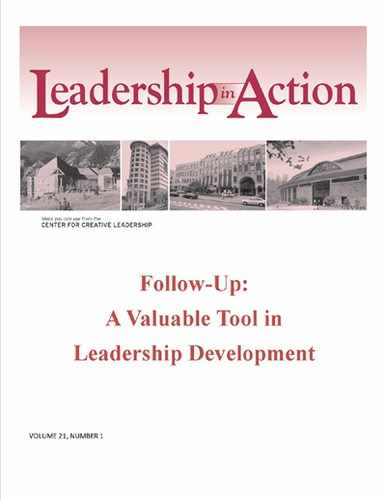Levels of Change
What specific kinds of change do individuals and organizations experience as a result of the leadership development process? For individuals, the two main levels of change are self-awareness and behavior, and periodic follow-up can be valuable in promoting both.
Gaining knowledge about how other people perceive you can enhance your understanding of your strengths and weaknesses and make evident the areas that are most in need of development. A keen understanding of your own skills and preferences and your impact on others is necessary to move to the next level—behavioral change—and acts as a motivational force for advancing to that stage. Behavioral change then feeds back into your growing self-awareness.
Behavioral modification involves reacting appropriately to a situation as it arises and being willing and able to use different approaches than one has used in the past. The enhanced self-awareness that can arise from the new knowledge and perspectives acquired from a leadership development experience can encourage changes in behavior. Behavioral modifications range from relatively simple, small-scale improvements—such as becoming a more effective listener or no longer interrupting people during meetings—to more complex, large-scale transformations—such as becoming more effective at leading a team or creating a work climate that values diversity of perspective.
Changes in groups and organizations that result from individual development can be assessed in two ways: as an aggregation of individual-level changes or as overall organizational change. Organizations play a significant role in enhancing ongoing developmental experiences. For example, welcoming participants back and creating and sustaining systems that encourage growth increases the likelihood that individual learning will be integrated into the person's overall leadership capacity, thus creating opportunities for impact on the organization. If a leadership development program has been designed to have an impact on organizational factors, periodic follow-up can be valuable in determining whether that impact is being achieved. A company that is soon to lose many of its senior leaders through retirement, for instance, might establish a leadership development initiative for succession planning as part of its effort to create a pipeline of qualified replacements for top management. Periodic follow-up that determines how many of the people moving into the senior positions have been through the development program and how many have not would therefore be a good indicator of how well the initiative was meeting its objectives.
